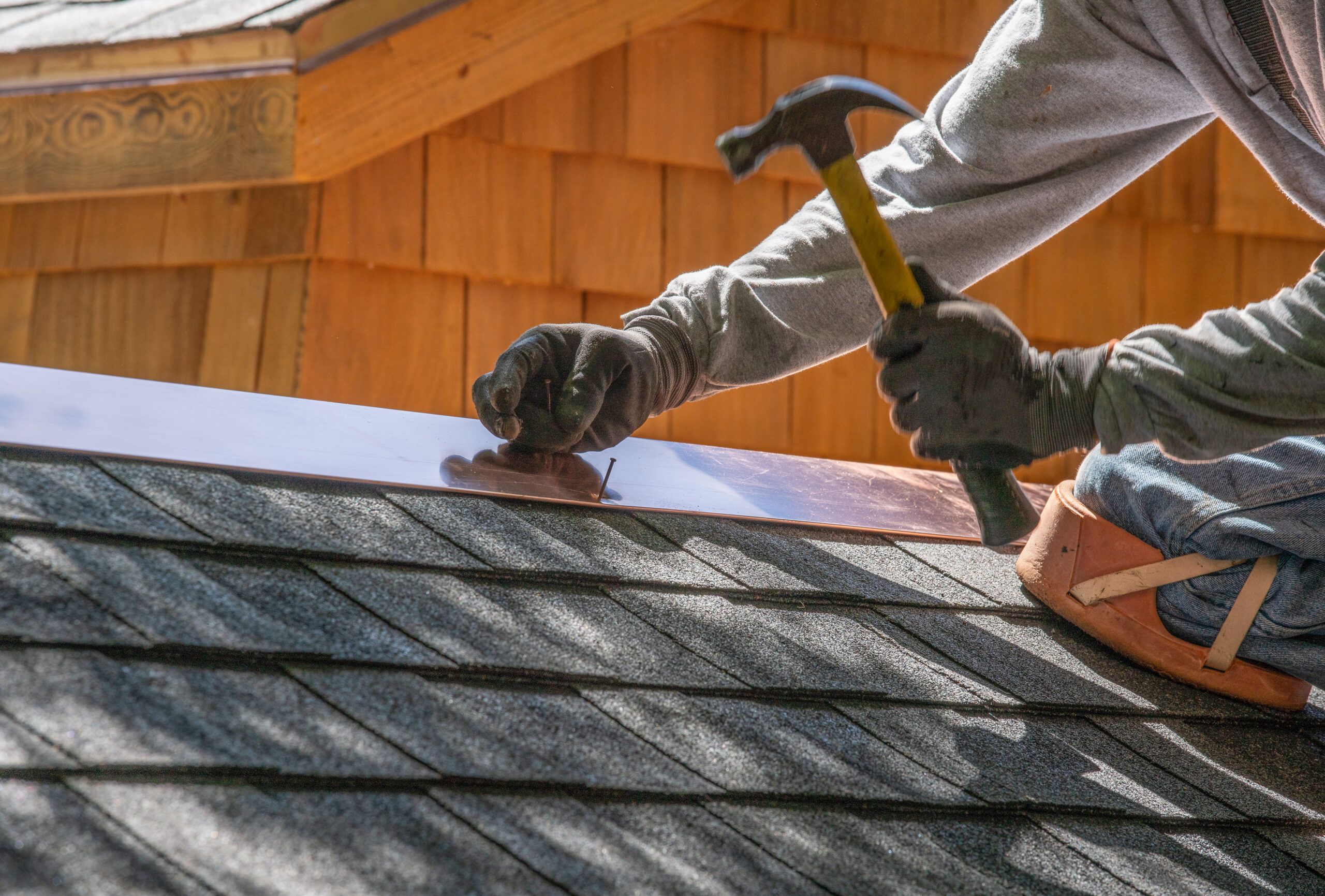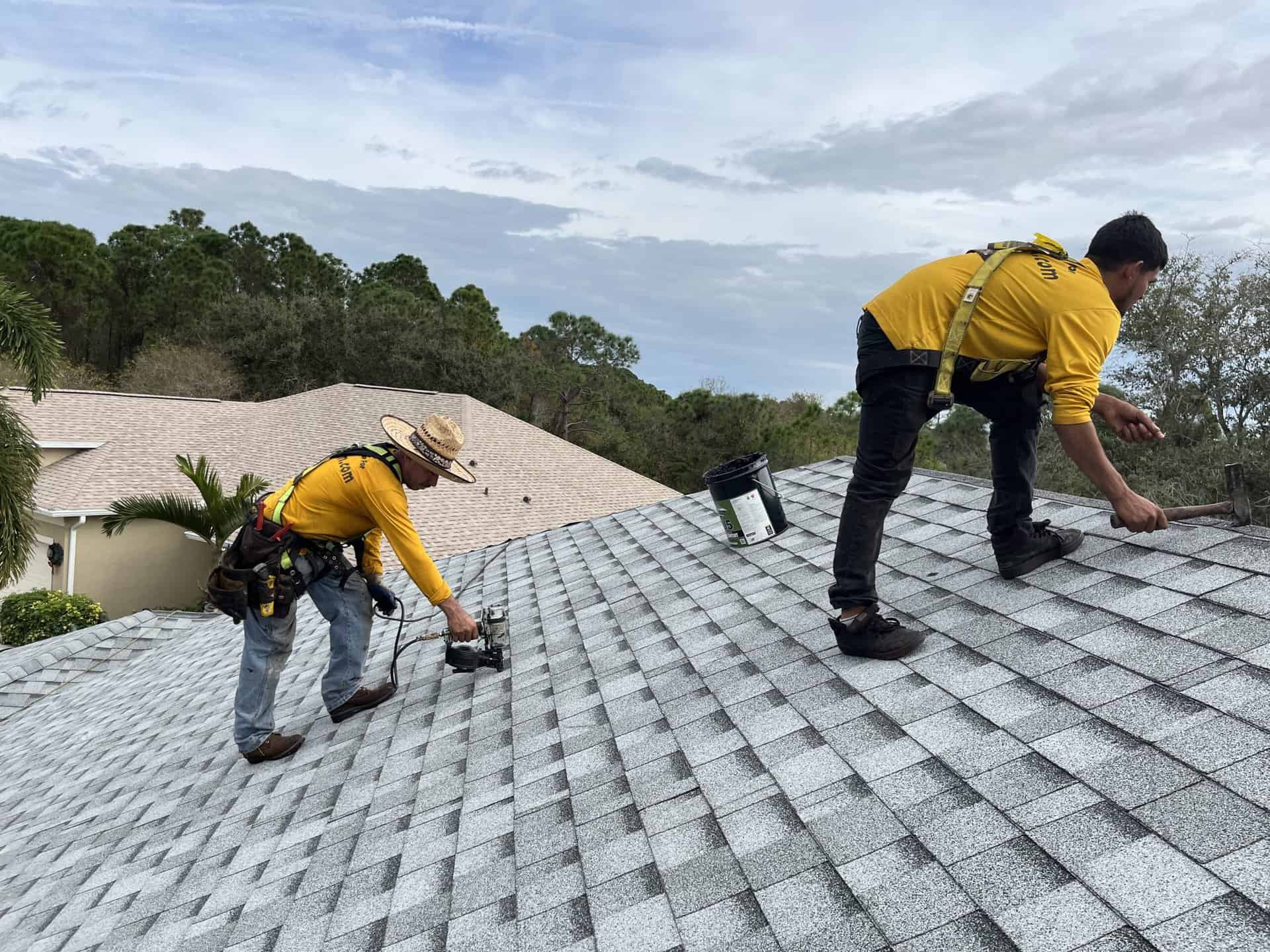Seasonal Roof Fixing List: Prepare Your Roof Covering for every single Climate
By complying with a seasonal roofing system fixing checklist, you can stay ahead of possible concerns. Allow's discover how proper maintenance can safeguard your home and prolong your roofing system's life-span.
Inspecting Your Roof Covering for Winter Season Readiness
As wintertime techniques, it's necessary to evaluate your roofing system to validate it can withstand extreme weather condition conditions. When snow and ice gather, Beginning by checking for missing or harmed roof shingles; also a small problem can lead to considerable leakages. Next off, check out the flashing around vents and chimneys-- this location is frequently prone to water breach.
Do not fail to remember to try to find signs of drooping or uneven surfaces, as these could suggest architectural troubles. Furthermore, confirm your rain gutters are clear; clogged up gutters can bring about ice dams that harm your roof.
 roof repair
roof repair
Springtime Cleansing: Cleaning Particles and Monitoring for Damage
When wintertime's grip launches, it's time to deal with springtime cleaning on your roofing system by removing debris and checking for any kind of damage. Beginning by evaluating your roof covering for fallen branches, leaves, and other debris that can trap moisture and create rot. A tidy roofing system promotes far better drainage and stops mold development.
Next, grab a durable ladder and meticulously examine tiles for splits or missing out on pieces. Take note of locations around chimneys and vents, as these areas are vulnerable to leaks. Do not fail to remember to analyze your rain gutters, ensuring they're free from blockages that could cause water pooling.
While you're up there, look for indicators of wear, like corrosion on steel flashing or loose seals around skylights. Addressing them now can save you from costly repairs later if you detect any kind of concerns. A little springtime cleansing goes a long means in keeping your roof covering's honesty.
Summertime Warm: Analyzing Your Roofing System for Heat-Related Issues
As summer warm heightens, it's vital to evaluate your roofing system for heat-related problems. Examine for any type of shingle damage, seek indicators of heat fastening, and review just how well your roof aerates. Taking these steps now can prevent larger issues in the future.
Inspect for Tile Damages
 roof repair
roof repair
Check for Heat Fastening
Warm buckling is a common concern that can emerge throughout the scorching summertime, and it's important to look for it on your roofing system. As temperatures rise, roofing products, particularly asphalt tiles, can expand and agreement. This motion can cause bending, creating unsightly bulges or splits. Begin by examining your roofing system visually; seek any kind of uneven surface areas or lifted sides. Pay unique interest to areas around vents and smokeshafts, where fastening is most likely to happen. If you spot any kind of signs of warmth buckling, it's vital to address them quickly to avoid additional damage. If you're not sure regarding the level of the issue or how to fix it effectively., think about speaking with a professional.
Examine Roofing System Air Flow Effectiveness
After checking for warm fastening, it's essential to review your roof covering's ventilation effectiveness. Proper air flow helps manage temperature and wetness, preventing damage from too much warmth. Bear in mind, preserving excellent ventilation not just lengthens your roof covering's life but additionally boosts your home's general energy efficiency, guaranteeing comfort throughout those hot summer season months.
Rainy Season Readiness: Ensuring Appropriate Drain
As the wet season techniques, you require to assure your roof's drain system prepares to take care of heavy downpours. Start by inspecting your downspouts and seamless gutters, and make sure they're clear of particles. Do not fail to remember to inspect the flashing and seals to stop leaks and water damages.
Inspect Seamless Gutters and Downspouts
Begin by checking for any type of visible particles, like leaves or twigs, that could obstruct the flow of water. Next, take a look at the downspouts for blockages or damages; an obstructed downspout can trigger water to overflow, potentially damaging your roofing and foundation. If you detect any type of problems, resolve them quickly to prevent pricey repair services.
Clean Roofing System Surface Area Particles
Utilize a roofing rake or broom to delicately eliminate debris, being careful not to damage the tiles. After cleaning, monitor your roofing after hefty rains to spot any kind of possible problems early. Keeping your roof clear of debris is important for avoiding expensive repairs down the line.
Check Flashing and Seals
After removing your roofing system of particles, take a better look at the flashing and seals around vents, smokeshafts, and skylights. If you notice any type of damages, it's important to fix or change it promptly. Ensuring these Click here to find out more components are in excellent problem will certainly aid maintain appropriate drainage and secure your home from water damages throughout hefty rains.
Checking and Keeping Roof Seals and Flashing
While it could seem simple to ignore, keeping and examining roof seals and flashing is vital for stopping leaks and water damages. If you find any type of concerns, it's best to reseal them with suitable roof sealer to assure a tight fit.
Following, analyze the blinking, which guides water far from crucial locations. Check for corrosion, loosened areas, or curved edges. If you locate any broken flashing, replace it or secure it effectively to keep its stability. Bear in mind, even a small defect can result in significant issues later on.
Last but not least, do not forget to wipe any kind of debris that may block the seals or flashing. Maintaining these parts in great shape will certainly assist protect your roofing system against the elements and expand its life-span.
Seamless Gutter Upkeep: Keeping Water Streaming Smoothly
Given that your seamless gutters play an important function in routing rainwater far from your home, regular upkeep is essential for stopping water damages and foundation problems. Beginning by removing debris like leaves, branches, and dust. A blocked rain gutter can bring about water overflow, which might harm your roof covering and siding. Use a sturdy ladder to reach the rain gutters safely, and put on handwear covers to protect your hands.
If you see any type of damages, repair or change the damaged parts quickly. Confirm downspouts are guiding water at the very least six feet away from your structure.
Lastly, examine that your rain gutters are effectively sloped, preferably a quarter inch for each ten feet. This incline assurances water streams efficiently toward the downspouts. Routine upkeep will maintain your gutters operating effectively and safeguard your home from costly repair services.
Arranging Professional Evaluations for Comprehensive Care
Regularly scheduling specialist evaluations is important for keeping your roof covering's integrity. This timing allows you to resolve any type of damages triggered by winter weather condition or summertime storms.
Throughout assessments, experts will assess roof shingles, flashing, and ventilation, making sure every little thing's in leading shape. They'll additionally check for indications of wear, leakages, or mold and mildew, which you could neglect. Setting up these inspections not just expands your roofing system's lifespan but additionally provides you comfort.
If you're uncertain concerning the condition of your roofing, do not be reluctant to call an expert. Purchasing these check-ups currently can conserve you a great deal later. Prioritize your roof's health and wellness, and you'll be well-prepared for whatever weather comes your method.
Regularly Asked Concerns
Just how Commonly Should I Inspect My Roof Throughout the Year?
You ought to examine your roof at least two times a year, preferably in springtime and loss. After severe weather condition events, check for damages as well. Normal examinations help you capture problems early and conserve cash on repairs.
What Indicators Suggest I Required a Roof Replacement Rather Than Fixing?
 roof repair
roof repair
Can I Execute Roofing Repair Works Myself, or Should I Work with a Specialist?
You can carry out small roof fixings yourself if you're comfy with heights and standard tools, however working with a specialist guarantees security and proper job. Don't run the risk of damages; it may be worth the investment for assurance.
What Are the most effective Materials for Roofing System Services in Different Environments?
For various climates, you'll desire products like asphalt shingles for moderate areas, metal roofing for extremes, and clay ceramic tiles for hot regions. Always consider local weather patterns to ensure your roofing stands up to the elements successfully.
Just How Do Roof Guarantees Affect Seasonal Upkeep Responsibilities?
Roof warranties commonly define upkeep obligations, so you'll require to examine the terms. If you don't maintain your roofing as required, you might void the service warranty, leaving you responsible for costly repair services.
Seasonal Roofing Repair Service Checklist: Prepare Your Roof for Every Climate
When winter months's grasp launches, it's time to take on spring cleansing on your roofing by getting rid of away particles and examining for any damages. Examine for any roof shingles damage, look for signs of warm buckling, and evaluate exactly how well your roofing ventilates. If you find any issues, consider speaking to a specialist for repair work to maintain your roofing in leading form and protect your home from possible water damage.
While it might seem very easy to ignore, maintaining and checking roofing system seals and blinking is necessary for protecting against leaks and water damages.